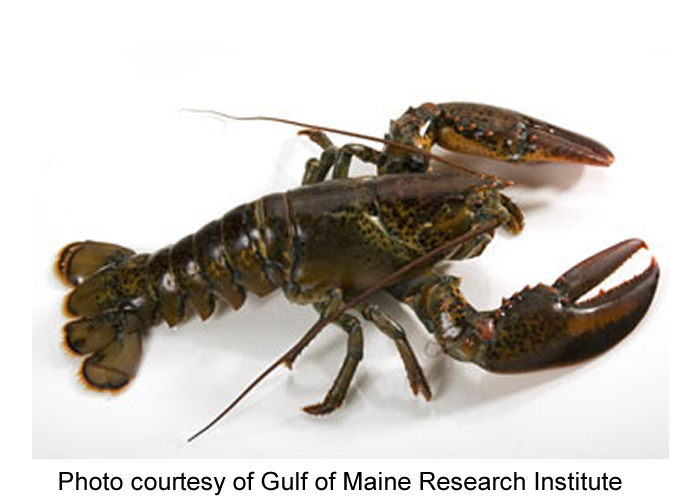 The American lobster, Homarus americanus, is found in its greatest quantity in Maine, but can be found from the Canadian Maritimes to North Carolina. The lobster is a crustacean and lives in the ocean. At present, Maine is the largest lobster producing state in the nation. Early reports suggest that the first lobsters were caught in 1605.
The American lobster, Homarus americanus, is found in its greatest quantity in Maine, but can be found from the Canadian Maritimes to North Carolina. The lobster is a crustacean and lives in the ocean. At present, Maine is the largest lobster producing state in the nation. Early reports suggest that the first lobsters were caught in 1605.
Historically, lobsters were not desired and were thought of as food for the poor. Early Americans used lobster as yard fertilizer and fishing bait. Prisoners and indentured servants complained because they were forced to eat lobsters often. In 1836, the Burnham & Morrill Company, B&M, started to can lobster for sale and distribution all over the world. By the 1920s the demand for lobster started to increase.
A cooked lobster becomes bright red in color, prior to which it is greenish brown with touches of orange and blue. A lobster's shell consists of the three pigments: blue, red, and yellow.
Lobster Facts
- The scientific name for the American lobster is Homarus americanus
- The greatest quantity of lobster are found off the coast of Maine. Over 120 million pounds of lobster was harvested in 2015, generating amost 457 million dollars. For more information visit the Department of Marine Resources website
- The minimum legal size of a lobster is 3 inches from the eye socket to the end of the body shell.
- Lobsters have two big claws and eight walking legs. One claw is the crusher claw, which helps the lobster destroy something he wants to eat. The other claw is called the pincher or ripper claw and is used to tear food apart.
- The four antennae located on a lobsters head along with the tiny hair that covers much of the lobsters body helps it to locate food; lobsters can detect motion but cannot clearly make out specific objects. For more information visit the Gulf of Maine Research Institute website.
- Lobsters are caught in traps or pots made of wood, metal and nets designed to trap them live. Traps are connected to brightly painted buoys that float above the water marking the traps location. Each lobsterman has his own unique design distinguishing his traps. To see how a lobster trap catches a lobster watch this YouTube video.
- When lobsters mate, the eggs aren't fertilized right away. The female carries the male's sperm and chooses when to fertilize her eggs.